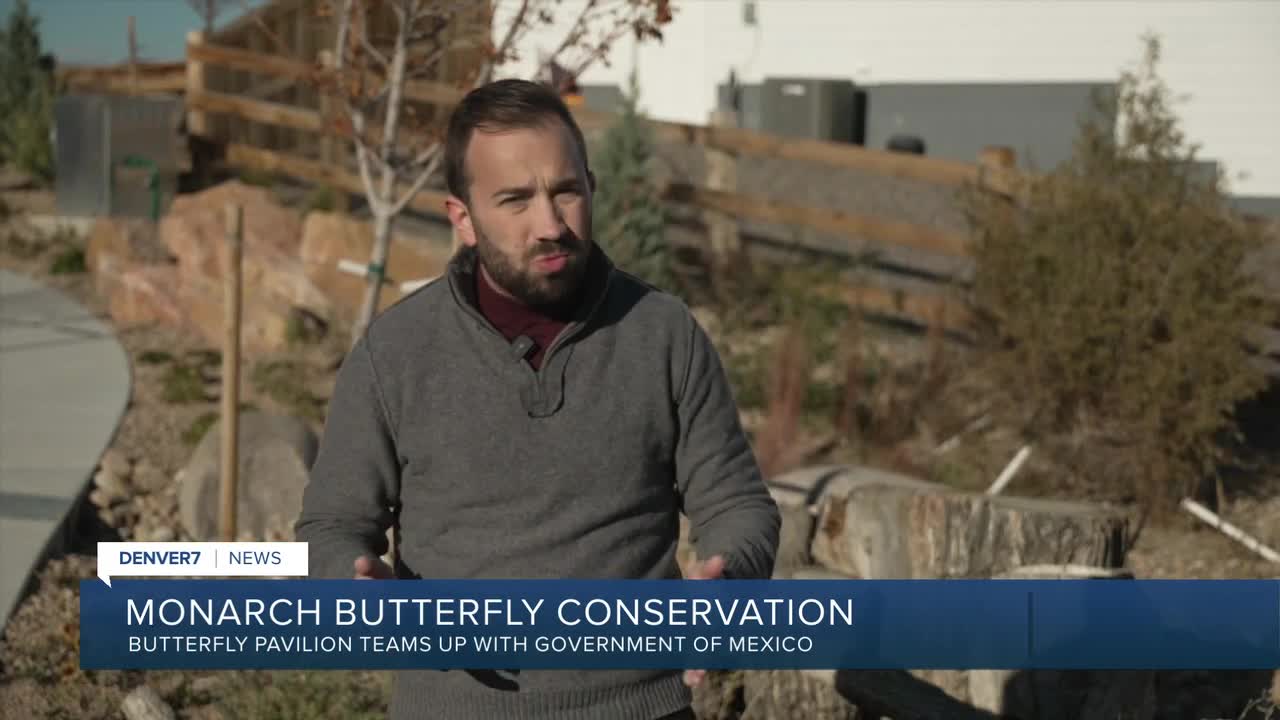WESTMINSTER, Colo. — The monarch butterfly, famed for its bright orange and black wings and a migration that can span up to 3,000 miles, is facing serious decline. Conservationists say solutions to save the monarch butterfly population range from planting a single backyard milkweed to reforesting parts of Mexico.
“Monarchs are iconic butterflies, not just because of their spectacular coloration, but also because they complete one of the greatest migrations in the animal kingdom,” Shiran Herschcovich, a lepidopterist at Butterfly Pavilion in Westminster, said. “They’re going to shelter in the same forest that their great-grandparents were in without ever having been there before.”

But those journeys are in peril. Herschcovich said migratory monarch populations have declined by more than 80% in recent decades.
“It’s a really tough time to be an insect right now,” Herschcovich said.
Conservation efforts are occurring at many scales. Butterfly Pavilion has partnered with the Mexican government to restore the oyamel fir forests that provide exclusive winter habitat for eastern migratory monarchs.
“We have just finished planting 100,000 new oyamel fir trees in a forest that has lost most of its range over the last few decades,” Herschcovich said. “This helps ensure monarchs have a forest to return to, not just tomorrow, but for generations to come.”
Closer to home, habitat creation in suburbs and yards is a practical way to support the migrating insects. Director of Forward Planning for Taylor Morrison of Colorado Matthew Valente said the home-building company and the National Wildlife Federation (NWF) have teamed up to create certified monarch gardens.
“Creating these gardens is a way to incorporate a little bit of nature into the suburban landscape,” Valente said.
Taylor Morrison has established 130 certified monarch gardens nationwide, including five in Colorado and many more are on the way along their migratory path.

The gardens emphasize native plants, especially milkweed — the sole host plant for monarch caterpillars — along with shelter and water.
“One of the biggest impacts that we’ve made…are milkweed plantings,” Valente said. “You don’t need a huge space to make a big impact for pollinators. It can be a small patch in your backyard.”
Senior Director of Habitat Planning and Design for NWF Sarah Williams said the organization’s monarch certification requires food, water and shelter for the butterflies, plus sustainable practices such as avoiding pesticides.
“The number one thing is planting native milkweed,” Williams said. “You can’t save the polar bear in your backyard, but you can save the monarch butterfly in your backyard.”
At Butterfly Pavilion’s Wings of the Tropics conservatory, about 2,000 free-flying butterflies from tropical regions are on display year-round. Staff stage a Monarch Magic event each November when hundreds of monarchs are featured inside the tropical house. Herschcovich said the pavilion’s work — from education to international reforestation partnerships — is aimed at reversing the steep declines affecting invertebrates.
“There is so much work to be done,” Herschcovich said. “Invertebrates make up 97% of the animal species that we know today, and most of them are in steep decline. I feel hopeful that we will be able to build that safer tomorrow for invertebrates as a whole.”






